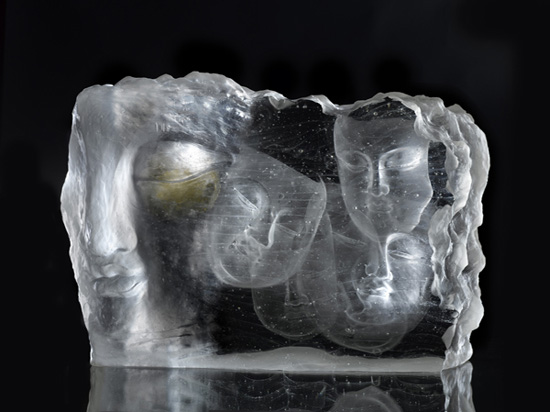
 |
| A work of liuli. (China Daily) |
For the group who had no knowledge of glass work, it was a tall order. Yang and Chang sold their houses and even refinanced their parents and brothers' houses. In the first three-and-a-half years, they invested some $3 million and "led a life without knowing if there is enough to survive tomorrow".
In 1991, they presented their first exhibition in Japan. They were proud to showcase their pate-de-verre technique, which they thought was invented in Egypt and revived by the French in the 19th century, until a Japanese expert told them Chinese mastery of the technique dates back to the Han Dynasty (206 BC-220 AD). The Japanese told them there was a pair of 11.5-cm liuli ear cups unearthed from the famed tomb of Emperor Liu Sheng in Hebei province.
They were dumbfounded and felt ashamed that as Chinese, they were so oblivious of their own history.
That is why they do not call their works "crystal glass" but "liuli". The term liuli first appeared in the Western Zhou Dynasty (c. 11th century-771 BC) as a reference to the lead-barium glass produced at the time. The term represents their respect for Chinese culture and history, and their commitment to promote the cultural legacy.


















 Photo story: 'Grassroots philanthropist' donates foods to quake zone
Photo story: 'Grassroots philanthropist' donates foods to quake zone


![]()
